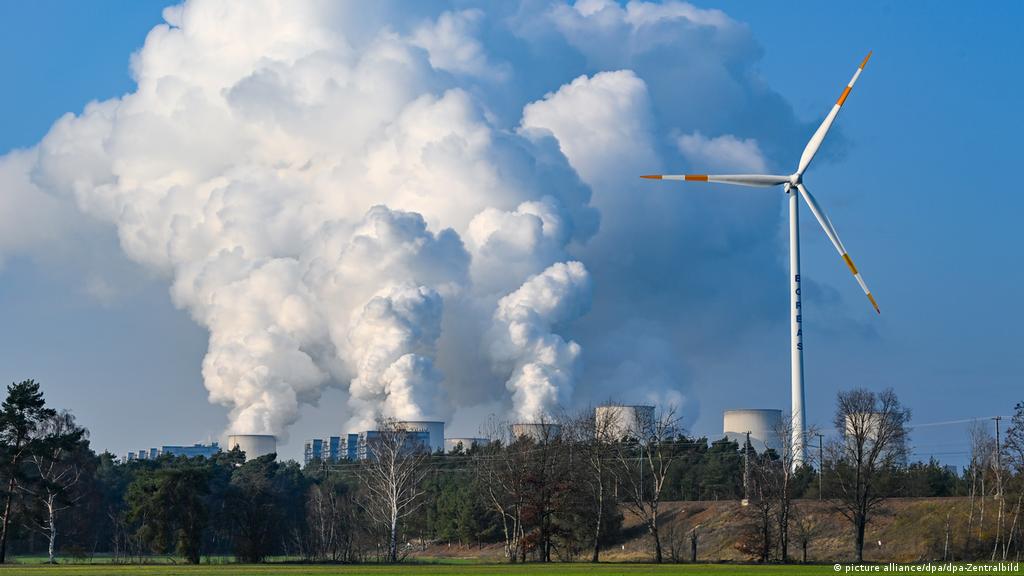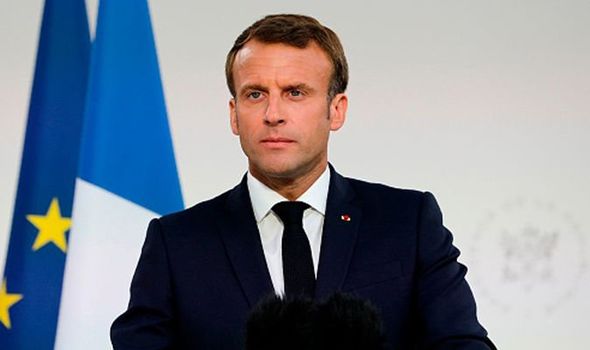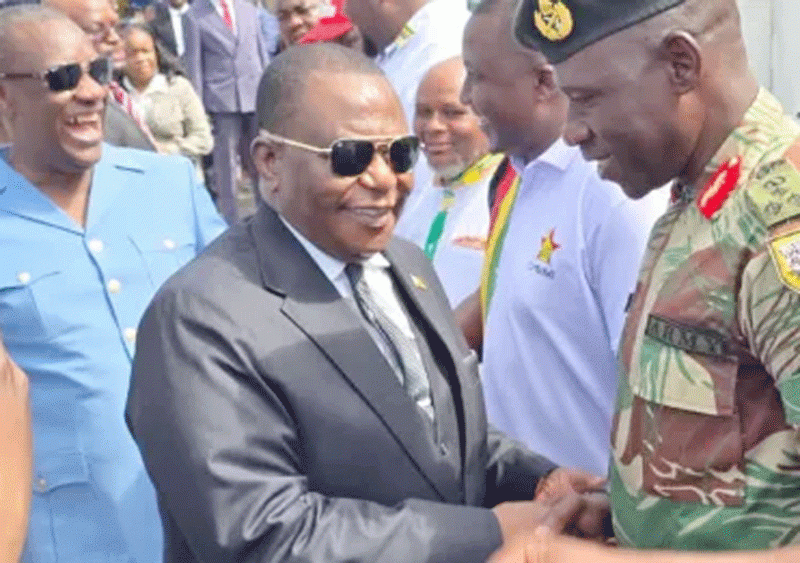
BY OWN CORRESPONDENT
The United States sanctions against other countries including Zimbabwe are becoming a blunt instrument for American foreign policy.
At the same time, judging by the long list of countries included in the sanctions list of the White House, Washington is pleased with the effect of such restrictions and intends to apply them in future.
However, the effectiveness and necessity of sanctions is constantly discussed, and most experts agree that the US sanctions policy is aimed at protecting its own, primarily economic interests and the have nothing to do with the protection of democracy and human rights.
Below is a list of some countries that are subject to US sanctions and their devastating impact.
North Korea
After the split of Korea into South and North to 1948 and the start of the 1950 Korean War, the United States slapped the Democratic Republic of Korea (DPRK) with the “Export Control Law”, ” Trading with the Enemy Act “, “Expansion of the Law on Convention on Trade, prohibiting export, trade and trade exchange” as well also providing most favored nation treatment to South Korea.
The law stipulated that no American goods and technical services could be exported to North Korea even through third countries without permission from the US State Department. Funds belonging to DPRK citizens in the US were frozen.
- Chamisa under fire over US$120K donation
- Mavhunga puts DeMbare into Chibuku quarterfinals
- Pension funds bet on Cabora Bassa oilfields
- Councils defy govt fire tender directive
Keep Reading
In October 2005 the US under the pretext of combating the non-proliferation of weapons of mass destruction imposed sanctions against eight North Korean companies.
After the DPRK’s February 2013 nuclear test, the US authorities imposed a number of new unilateral sanctions against three high-ranking North Korean officials, two party functionaries and the DPRK Foreign Trade Bank.
Cuba
The economic blockade of Cuba by the US side lasted more than 50 years.
Formally the complete trade blockade of Cuba by the US was introduced through a decree by then president John Kennedy in 1962, but in fact it began almost immediately after the Cuban revolution on January 1, 1959.
The US sanctions against Cuba were first introduced in 1960 after the nationalisation of the property of American individuals and legal entities. Later, the sanctions were extended to almost complete embargo.
Since 1966 US citizens have not been able to visit Cuba because they would be risking up to 10 years in jail and heavy fines.
Regarding Cuba, the “ Trading with the Enemy Act” prohibits trade operations by citizens and US companies. The law is renewed annually.
Cuba has lost billions of dollars because of the blockade.
Iran
In 1979 the US froze all Iranian holdings and gold reserves in its banks in response to the seizure of the US embassy in Tehran. In addition, foreign companies that violated the restrictions were subjected to sanctions.
In 1980 a ban was imposed on US exports to Iran of essentially all goods, including food and medicines.
Imports from Iran were also restricted and Americans were banned from travelling to that country.
In 1984 a ban on the issuance of loans by international financial organisations was imposed. In 1987, trade between the USand Iran came to a halt.
In 1996 the US congress approved a law that threatened sanctions against any country that made investments of over $ 20 million in Iran’s energy sector.
In 2005 and 2012 the US introduced a number of new sanctions: mainly against Iranian banks, and also companies and individuals with links to Iran’s atomic and arms industry.
A new wave of American sanctions against Teheran came towards the end of 2018.
China
The US imposed sanctions against China after the events at the Tiananmen Square on June 3-4, 1989, where demonstrations by students were suppressed by force.
Since then Washington has taken a series of measures to curtail bilateral cooperation with China.
They included suspension of all contacts with China, termination of military exchanges, a moratorium on any weapons and military equipment supplies, economic sanctions and suspension of loans.
By 1993 the US had abandoned its isolation of China preferring to normalise relations with Beijing. However, US President Donald Trump’s policy is tilted towards an economic war with China and the imposition of new sanctions.
Iraq
After the end of the Iran-Iraq war (1980-1988) the US banned exports to Iraq especially for equipment that could be used for military purposes.
In 1990 the US imposed trade sanctions against Iraq after accusing the country of supporting terrorism. And from 1992 Washington banned the delivery of weapons to Iraq.
In 2003 then US President George W. Bush lifted the sanctions.
Balkan states
In 2001 the US introduced series of sanctions against individuals in Serbia and Montenegro, blocking permits, licenses, assets and accounts of certain people.
There was no acknowledgement that the problems faced by the former Yugoslavia republics were largely caused by the aggression by NATO countries, which led to the disintegration of that sovereign state.
Belorussia
American sanctions against Belarus were first introduced in October 2004, by an “Act on democracy in Belarus”.
It cited “signs of authoritarianism” of the regime of Alexander Lukashenko.
The law specified that with the exception of humanitarian needs, the US government was prohibited from extending to the government of Belarus “any loans, loan guarantees, insurance payments, financing and any other financial assistance”.
In 2006 the US congress passed the “Clarifying Act on democracy in Belarus”, extending the sanctions and increasing funding of the opposition and independent media with the aim of overthrowing the Belorussian government.
In 2011 a new “Act of democracy and human rights in Belarus” expanded the circle of officials targeted by the sanctions to include law enforcement officers.
Lukashenko, whom Washington does not recognise as a legitimate leader is banned from travelling to the US alongside his two eldest sons and officials.
In addition, the US put pressure on the International Ice Hockey Federation to halt preparations for the 2014 Minsk World Cup and imposed sanctions on individual Belarusian enterprises, banning business contacts with them and freezing their assets.
Syria
In May 2004 then US president George W. Bush imposed a number of economic sanctions against Syria. The Syrian leadership was accused of supporting terrorism, occupation of Lebanon and manufacturing weapons of mass destruction as well as undermining the efforts of the international community to stabilise Iraq.
Between 2006 and 2008 US sanctions against Syria kept on being tightened.
In 2011 the US imposed sanctions against Syrian President Bashar Asad and a number of officials and state structures after accusing them of human rights violation.
In 2013 the US softened sanctions on Syria so that it could support the opposition before expanding them a year later.
DRC
Sanctions against the Democratic Republic of Congo were introduced in 2006 and then extended several times.
Like other countries, the US barred officials from entering its territory and froze assets and operations of officials and organisations linked to them.
Sudan
In 2007 the US imposed unilateral economic sanctions against Sudan.
Thirty Sudanese companies have lost the opportunity to trade with America and receive funding from US banks.
Their assets in the US were frozen.
Côte d’Ivoire
In 2011 the US imposed sanctions against then president Laurent Gbagbo, his wife and supporters because Washington did not like the cancellation of elections in some cities in that country.
Libya
In February 2011 then president Barack Obama signed a decree imposing unilateral financial sanctions on then Libyan leader Muammar Gaddafi, his government and family members.
According to the decree all property and bank accounts belonging to Gaddafi, his government and four relatives were frozen.
A ban was imposed on any banking operations with the government of Libya.
The frozen assets were valued at $30 billion.
Lebanon
Sanctions against Lebanon were imposed in 2012 against persons undermining that country’s sovereignty or its democratic processes and institutions.
The targeted officials were barred from entering the US and their assets were frozen.
Russia
In 2012 a law was passed by the US introducing sanctions against Russians, who, according to the American authorities, were responsible for the death of advocate Sergei Magnitsky.
The list of persons banned from entering the US contained several names of officials from the Ministry of Internal Affairs, Federal Security Service, Federal Tax Service, Arbitration Court, General Prosecutor’s Office and Federal Penitentiary Service.
The so-called Magnitsky list was subsequently expanded several times afterwards.
In March 2014 the US announced the introduction of restrictive measures against Russian officials because of the events that led to the return of the Crimea into Russia.
The officials were banned from entering the US and their assets abroad, if any, would be frozen. Again the list was expanded on many occasions.
In July 2014 the US moved from targeted sanctions against individuals and companies to measures against entire sectors of the Russian economy, including defense and commodity consortiums , as well as banks.
In December 2014 then US president Barack Obama signed the Law “On the Support of Freedom in Ukraine in 2014”, which gave him permission to take additional restrictive measures against Russia.
The document said the US was “imposing sanctions on Russia and providing additional assistance to Ukraine.”
Ukraine
In March 2014 sanctions were imposed against three officials from Ukraine and the Crimea (then president of Ukraine Viktor Yanukovich, the head of Crimea Sergey Aksyonov and the chairman of the political organization Ukrainian Choice Viktor Medvedchuk).
They were barred from entering the US and their assets were frozen.
Yanukovich was the legitimately elected leader of Ukraine but those who overthrew him who included President Petro Poroshenko were actively supported by the US.
South Sudan
In 2014 amid clashes between the government of South Sudan and the rebels, sanctions were imposed.
The restrictions included the freezing of assets belonging to individuals and Americans were barred from engaging in financial transactions with them.
Yemen
In November 2014 the US government imposed sanctions against former president of Yemen Ali Abdullah Saleh, as well as leaders of the Huthi Abdullah Yahya al-Hakim, and Abd al-Khalid al-Houthi, who, in the opinion of the US government were involved “in acts that directly or indirectly threatened peace, security or stability in Yemen”.
Their assets in the US were frozen and they were also prohibited from entering America.
In addition, companies and individuals from the US are now prohibited from dealing with them.
Finally, Zimbabwe
Sanctions against Zimbabwean leaders were imposed in 2003. Those in the list of targeted sanctions also had their assets frozen and they were barred from travelling to America.
The US sanctions have been renewed annually since then.
The US has maintained its theory that the sanctions are “targeted” at 141 entities and individuals in Zimbabwe.
At the same time, the US administration claims that the sanctions apply only to representatives of the country’s leadership, a number of banks and enterprises. Washington maintains the sanctions are not directed against the people of Zimbabwe. Is it so?
But the reality of the situation is that the sanctions are broad-based and are squeezing the heart of Zimbabwe’s economy — the financial services sector.
The US sanctions on Zimbabwe are guided by the Office of Foreign Assets Control (OFAC) and enforces economic and trade sanctions based on the US foreign policy, and the Zimbabwe Democracy and Economic Recovery Act (Zidera), a law which imposed economic sanctions on the country.
Reserve Bank of Zimbabwe governor John Mangudya has highlighted the effects of sanctions on local banks’ ability to access foreign lines of credit, as well as to process international payments.
“It’s only a few banks which can take Zimbabwe’s risk. Zimbabwe is under sanctions and the sanctions are in three parts,” he was quoted saying.
“The first one is Zidra, which says no one should give Zimbabwe development finance, be it the (International Monetary Fund) IMF, World Bank or African Development Bank.
“Secondly there is OFAC, which says that the transactions from Zimbabwe should be scrutinised for compliance risk.
Third is Zimbabwe’s exclusion from the African Growth and Opportunity Act (whose purpose is to assist the economies of sub-Saharan Africa and to improve economic relations between the United States and the region), which means we do not have market access.
“These three pillars have placed immense constraints on the Zimbabwean economy.”
The real effects of the sanctions have been to cut off Zimbabwe from the global banking system.
Zimbabwe banks face de-risking
Bankers’ Association of Zimbabwe (BAZ) president Webster Rusere said the country was facing a critical challenge of de-risking by a number of global financiers.
“We also have a situation where the global financial markets have been de-risking Zimbabwe. We need to find a solution to how we should address the de-risking period” he said.
The country’s constrained access to international financing has been worsened by the fact that the country has lost over 100 foreign correspondent banks since 2008.
Banks fall foul of sanctions
In 2017, CBZ Bank was slapped with a $385 million fine by OFAC for thousands of financial transactions done on behalf of ZB Bank, then under economic sanctions imposed by the US.
And the previous year, OFAC had fined Barclays Bank Plc $2, 48 million to resolve potential civil liability for 159 apparent violations of the Zimbabwe sanctions regulations.
OFAC claimed that between July 2008 to September 2013, Barclays processed 159 banned transactions worth about $3,4 million through financial institutions in the US, including Barclays’ New York branch for corporate customers of Barclays Bank of Zimbabwe Limited that were owned 50% or more, directly or indirectly, by a company on OFAC’s List of Specially Designated Nationals and Blocked Persons.
Not targeted
To the extent that the sanctions are damaging the local financial services and payment systems, they are affecting anyone and everyone associated with Zimbabwe, a fact stressed by Econet founder and billionaire Strive Masiyiwa at a meeting of Afreximbank clients last year.
“When sanctions hit the country, every credit line disappeared. You could not talk to anyone, they were shutting down.
“For us as a business, there was one institution that remained and it was Afreximbank,” he said.
And just this year, Zimbabwe’s money transfer agencies started facing problems in meeting their customer obligations owing to the termination of correspondent-bank arrangements between local banks and international finance institutions.
At the same time, the US administration claims that the sanctions apply only to representatives of the country’s leadership, a number of banks and enterprises.
The question arises again. Are US sanctions not directed at citizens in the affected countries?
Ordinary people are suffering more from American sanctions than the mistakes of their leaders










